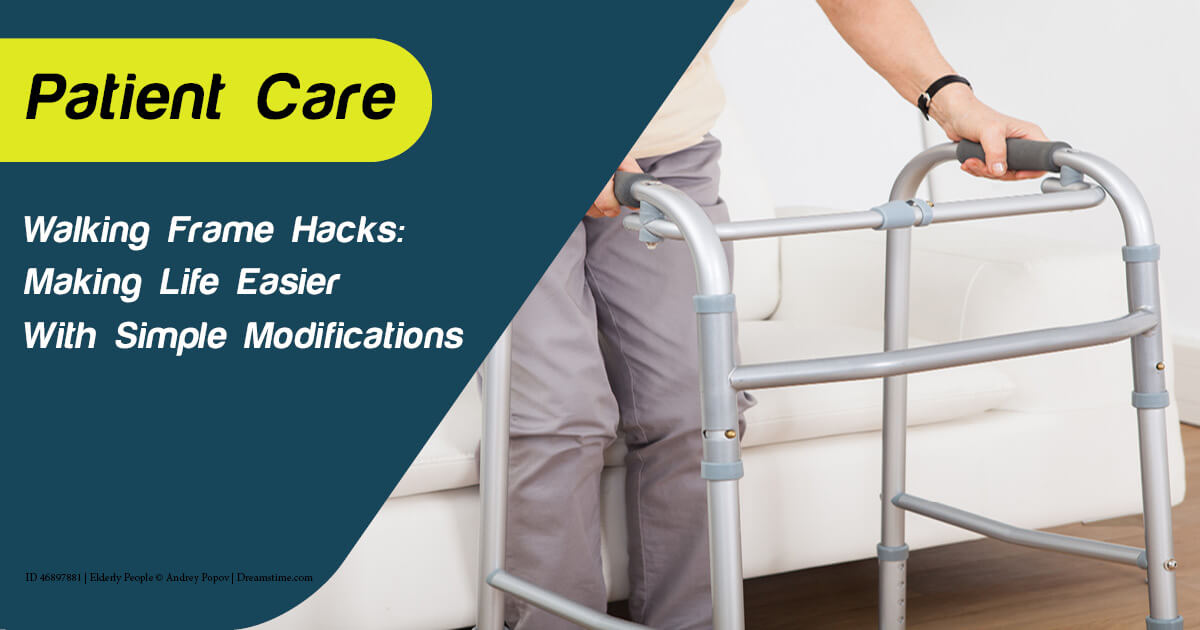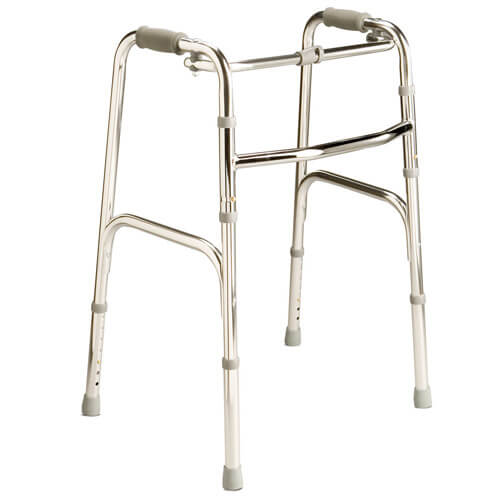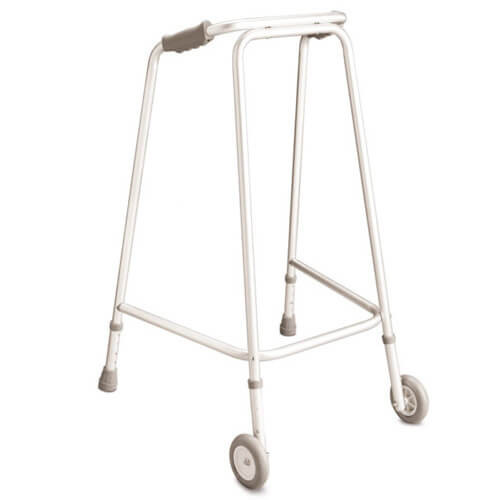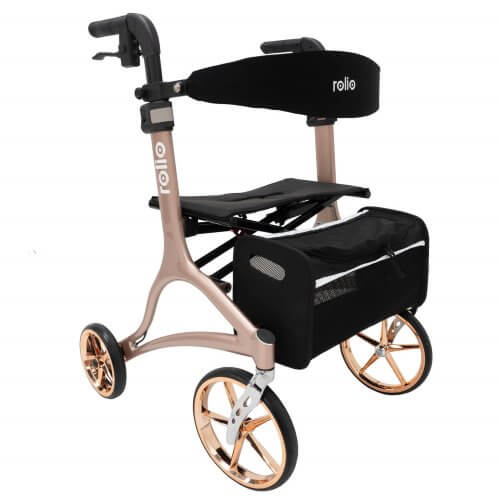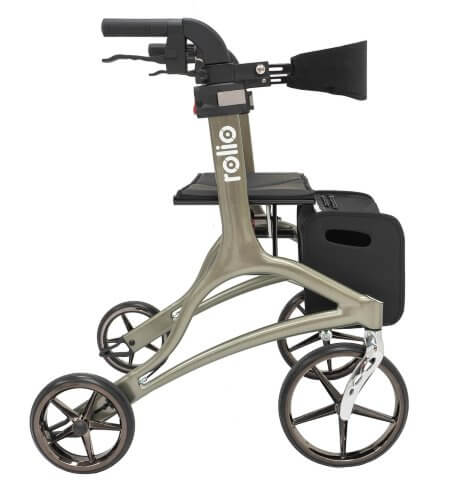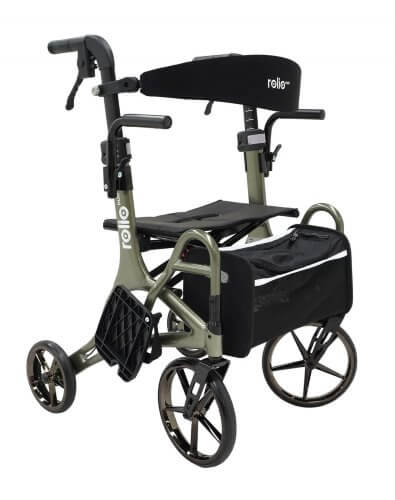
Share
Choosing the right mobility aid isn’t just about walking support — it’s about restoring confidence, independence and comfort in everyday life. Whether you’re recovering from surgery, living with reduced balance, or navigating long-term mobility challenges, the right solution can make a world of difference.
In this guide, we’ll unpack the differences between rollators, walkers and walking frames, and help you decide which type of walking aid is best suited to your needs — or the needs of someone you care for.
Understanding the options: rollators, walkers and walking frames
Before choosing the right mobility aid, it helps to understand what’s available. From ultra-stable walking frames to modern rollators with built-in seats, each option supports different levels of mobility and confidence.
Walking frames (also called pick-up frames)
Walking frames are one of the most stable types of walking aids. These frames have no wheels and are lifted slightly with each step. That might sound tiring, but they're often the safest option for people who need maximum support and balance, particularly on flat indoor surfaces.
Because of their rigid design, walking frames are often recommended for:
- People recovering from surgery or injury
- Older adults who need firm support with every step
- Situations where stability is more important than speed or convenience
They’re lightweight, easy to use, and don’t roll away, which gives users extra peace of mind. Some walking frames also include attachments like wheels to make movement easier over time.
Walkers (two-wheel or front-wheel walkers)
Walkers are a step up in mobility from traditional walking frames. With two wheels at the front and rubber stoppers at the back, walkers are designed to slide forward without being lifted completely. This makes them an ideal choice for people who:
- Have limited upper body strength
- Want to walk for slightly longer distances
- Need more ease of movement indoors or on smooth paths
Walkers provide a balance between stability and mobility. They’re especially useful for people transitioning from a walking frame but aren’t ready for a fully-wheeled rollator.
They don’t have brakes or a seat, so they’re not ideal for extended time out and about, but for day-to-day indoor use, they offer reliable support with less effort than lifting a frame.
Rollators (four-wheeled walkers)
Rollators are the most versatile and feature-rich walking aids. With four wheels, hand brakes, and often a padded seat and shopping basket, rollators are built for more mobile people who still need regular support and the option to rest.
Rollators are ideal for:
- People who enjoy going on longer outings
- Older adults with stamina who still need occasional support
- Anyone who needs a break while walking and appreciates a built-in seat
They are easy to manoeuvre, often have height-adjustable handles for comfort, and fold down for travel or storage. One standout model is the Rolio Rollator — a compact, modern rollator with four colour choices, ergonomic design, and tool-free folding.
Depending on your storage or transport needs, you can choose from side-folding or front-folding rollators. Some models are made from lightweight aluminium or ultra-light carbon fibre, which can significantly reduce the weight you’ll need to lift and change how much room it takes up in the boot of a car.
Compared to walkers and walking frames, rollators offer the most freedom, but they do require enough balance and coordination to control the brakes and navigate varied surfaces.
Key differences at a glance
Feature |
Walking Frame |
Walker |
Rollator |
Wheels |
None |
2 front wheels |
4 wheels |
Brakes |
No |
No |
Yes (hand brakes) |
Seat |
No |
No |
Yes |
Portability |
Light, basic |
Moderate |
Foldable, some compact |
Indoor-use |
Excellent |
Good |
Good |
Outdoor-use |
Limited |
Limited |
Excellent |
Stability |
Maximum |
High |
Moderate to high |
How to choose the right walking aid for your needs
Everyone’s mobility needs differ, so it’s essential to consider your lifestyle, strength and environment when selecting a device. Here’s what to consider.
Balance and strength
- If you have limited strength or tire easily, a rollator with a seat like the Rolio may be the best option.
- A non-wheeled walking frame may feel safer if your primary concern is stability and fall prevention.
Indoor vs outdoor use
- For tight indoor spaces, narrow walking frames offer better maneuverability.
- A rollator's wheels and brakes provide smoother motion for walking around shops, parks or local paths.
Storage and transport
- Do you need to pack it into a car or take it on public transport? The Rolio Rollator folds easily and has a compact footprint, making it ideal for travel.
Comfort and support
- Rollators like the Rolio include height-adjustable handles and padded seats for comfort.
- Walking frames can support more body weight, especially during post-surgery recovery.
Why we love Rolio walkers and rollators
When it comes to rollators, the Rolio range stands out for its innovative design, thoughtful features and everyday practicality. Whether you’re heading to the local shops, catching up with friends or moving around the house, Rolio rollators are built to make every step feel more confident.
We recommend the Rolio because it’s not just one-size-fits-all. The range includes different models to suit various heights, support needs and preferences, making finding the right fit for your lifestyle easier.
The Rolio Walker
The original Rolio Rollator is a great all-rounder. Lightweight and compact at under 10kg, it folds easily for transport and features a padded seat, backrest and storage bag for convenience. With height-adjustable handles and a choice of two stylish colours, it’s perfect for everyday use — both indoors and out.
Key features:
- Lightweight frame under 10kg
- One-touch folding mechanism
- Ultra-comfort seat and backrest
- Safety brakes and push-down locks
- Large removable tote bag
- Kerb handler for easy maneuvering over uneven surfaces
This model is also available in various sizes—check out the Rolio Tall Walker for those over 6ft, or the Rolio+ Walker for bariatric users and those with broader body shapes.
Rolio Duo – 2-in-1 Walker
The Rolio Duo takes things further, offering a dual-purpose design that functions as a rollator and a temporary transit chair. If you tire while walking, the Duo allows a support worker or family member to assist by pushing from behind.
Key features:
- Flip-up footrests
- Lightweight frame under 10kg
- Padded seat and backrest
- Handlebar brakes and locking wheels
- Heavy-duty transfer handles
- Handle grips with safety reflectors
Step forward with confidence with Active Mobility
Choosing a walking aid is more than a medical decision — it’s about feeling secure, supported and ready to enjoy daily life again. Whether you're looking for a basic walking frame for post-surgery recovery or a feature-rich rollator for outdoor independence, there's a solution to suit your needs.
The key is finding a mobility aid that matches your lifestyle, environment, and level of support. That’s where we come in.
At Active Mobility, we understand that no two people are the same, so we offer a wide range of walkers, rollators and walking frames — along with expert advice to help you find the right fit. Our team works closely with older adults, people with disability, occupational therapists, and support networks across Australia to provide equipment that empowers movement and builds confidence.
We're here to help if you’re unsure where to start or comparing models like the Rolio, Rolio Duo, or Rolio Tall. Contact our team online, book a trial or visit one of our showrooms for expert advice tailored to your needs. We’re here to help you move better, live more freely, and feel good doing it.



